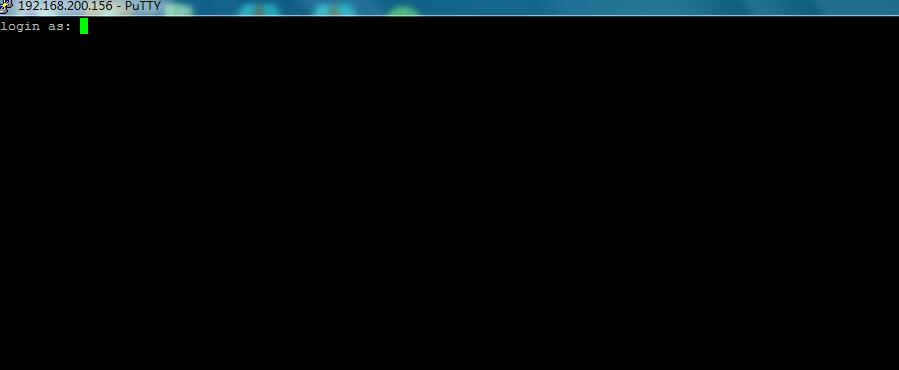FreeBSD 10.2 设置sshd

因为笔者爱好FreeBSD,于是乎说干就干用了虚机装了FreeBSD 10。各种等待后系统终于安装完成但因为在虚拟机中操作不方便,于是决定用ssh远程操作系统。之前笔者也研究过配置方法,但最终以失败告终。终于在今天笔者多方查找资料后找到了开启的方式,现在我将方法分享给大家希望可以帮助到和笔者有同样问题的朋友。
首先用cd命令切换到/etc/ssh/sshd_config 再用vi命令编辑
- root@bsdserver:/etc/ssh # vi sshd_config
- # $OpenBSD: sshd_config,v 1.93 2014/01/10 05:59:19 djm Exp $
- # $FreeBSD: releng/10.2/crypto/openssh/sshd_config 264692 2014-04-20 12:46:18Z des $
- # This is the sshd server system-wide configuration file. See
- # sshd_config(5) for more information.
- # This sshd was compiled with PATH=/usr/bin:/bin:/usr/sbin:/sbin
- # The strategy used for options in the default sshd_config shipped with
- # OpenSSH is to specify options with their default value where
- # possible, but leave them commented. Uncommented options override the
- # default value.
- # Note that some of FreeBSD's defaults differ from OpenBSD's, and
- # FreeBSD has a few additional options.
- #Port 22
- #AddressFamily any
- #ListenAddress 0.0.0.0
- #ListenAddress ::
- # The default requires explicit activation of protocol 1
- #Protocol 2
- # HostKey for protocol version 1
- #HostKey /etc/ssh/ssh_host_key
- # HostKeys for protocol version 2
- #HostKey /etc/ssh/ssh_host_rsa_key
- #HostKey /etc/ssh/ssh_host_dsa_key
- #HostKey /etc/ssh/ssh_host_ecdsa_key
- #HostKey /etc/ssh/ssh_host_ed25519_key
- # Lifetime and size of ephemeral version 1 server key
- #KeyRegenerationInterval 1h
- #ServerKeyBits 1024
- # Ciphers and keying
- #RekeyLimit default none
- # Logging
- # obsoletes QuietMode and FascistLogging
- #SyslogFacility AUTH
- #LogLevel INFO
- # Authentication:
- #LoginGraceTime 2m
- #PermitRootLogin no
- #StrictModes yes
- #MaxAuthTries 6
- #MaxSessions 10
- #RSAAuthentication yes
- #PubkeyAuthentication yes
- # The default is to check both .ssh/authorized_keys and .ssh/authorized_keys2
- #AuthorizedKeysFile .ssh/authorized_keys .ssh/authorized_keys2
- #AuthorizedPrincipalsFile none
- #AuthorizedKeysCommand none
- #AuthorizedKeysCommandUser nobody
- # For this to work you will also need host keys in /etc/ssh/ssh_known_hosts
- #RhostsRSAAuthentication no
- # similar for protocol version 2
- #HostbasedAuthentication no
- # Change to yes if you don't trust ~/.ssh/known_hosts for
- # RhostsRSAAuthentication and HostbasedAuthentication
- #IgnoreUserKnownHosts no
- # Don't read the user's ~/.rhosts and ~/.shosts files
- #IgnoreRhosts yes
- # Change to yes to enable built-in password authentication.
- #PasswordAuthentication no
- #PermitEmptyPasswords no
- # Change to no to disable PAM authentication
- #ChallengeResponseAuthentication yes
- # Kerberos options
- #KerberosAuthentication no
- #KerberosOrLocalPasswd yes
- #KerberosTicketCleanup yes
- #KerberosGetAFSToken no
- # GSSAPI options
- #GSSAPIAuthentication no
- #GSSAPICleanupCredentials yes
- # Set this to 'no' to disable PAM authentication, account processing,
- # and session processing. If this is enabled, PAM authentication will
- # be allowed through the ChallengeResponseAuthentication and
- # PasswordAuthentication. Depending on your PAM configuration,
- # PAM authentication via ChallengeResponseAuthentication may bypass
- # the setting of "PermitRootLogin without-password".
- # If you just want the PAM account and session checks to run without
- # PAM authentication, then enable this but set PasswordAuthentication
- # and ChallengeResponseAuthentication to 'no'.
- #UsePAM yes
- #AllowAgentForwarding yes
- #AllowTcpForwarding yes
- # and session processing. If this is enabled, PAM authentication will
- # be allowed through the ChallengeResponseAuthentication and
- # PasswordAuthentication. Depending on your PAM configuration,
- # PAM authentication via ChallengeResponseAuthentication may bypass
- # the setting of "PermitRootLogin without-password".
- # If you just want the PAM account and session checks to run without
- # PAM authentication, then enable this but set PasswordAuthentication
- # and ChallengeResponseAuthentication to 'no'.
- #UsePAM yes
- #AllowAgentForwarding yes
- #AllowTcpForwarding yes
- #GatewayPorts no
- #X11Forwarding yes
- #X11DisplayOffset 10
- #X11UseLocalhost yes
- #PermitTTY yes
- #PrintMotd yes
- #PrintLastLog yes
- #TCPKeepAlive yes
- #UseLogin no
- #UsePrivilegeSeparation sandbox
- #PermitUserEnvironment no
- #Compression delayed
- #ClientAliveInterval 0
- #ClientAliveCountMax 3
- #UseDNS yes
- #PidFile /var/run/sshd.pid
- #MaxStartups 10:30:100
- #PermitTunnel no
- #ChrootDirectory none
- #VersionAddendum FreeBSD-20140420
- # no default banner path
- #Banner none
- # override default of no subsystems
- Subsystem sftp /usr/libexec/sftp-server
- # Disable HPN tuning improvements.
- #HPNDisabled no
- # Buffer size for HPN to non-HPN connections.
- #HPNBufferSize 2048
将#PermitRootLogin no 前面的#号去掉 再把no改为yes即可
转载分享请注明原文地址(追梦者的IT技术博客):https://it.zhuimengba.com/post-8.html